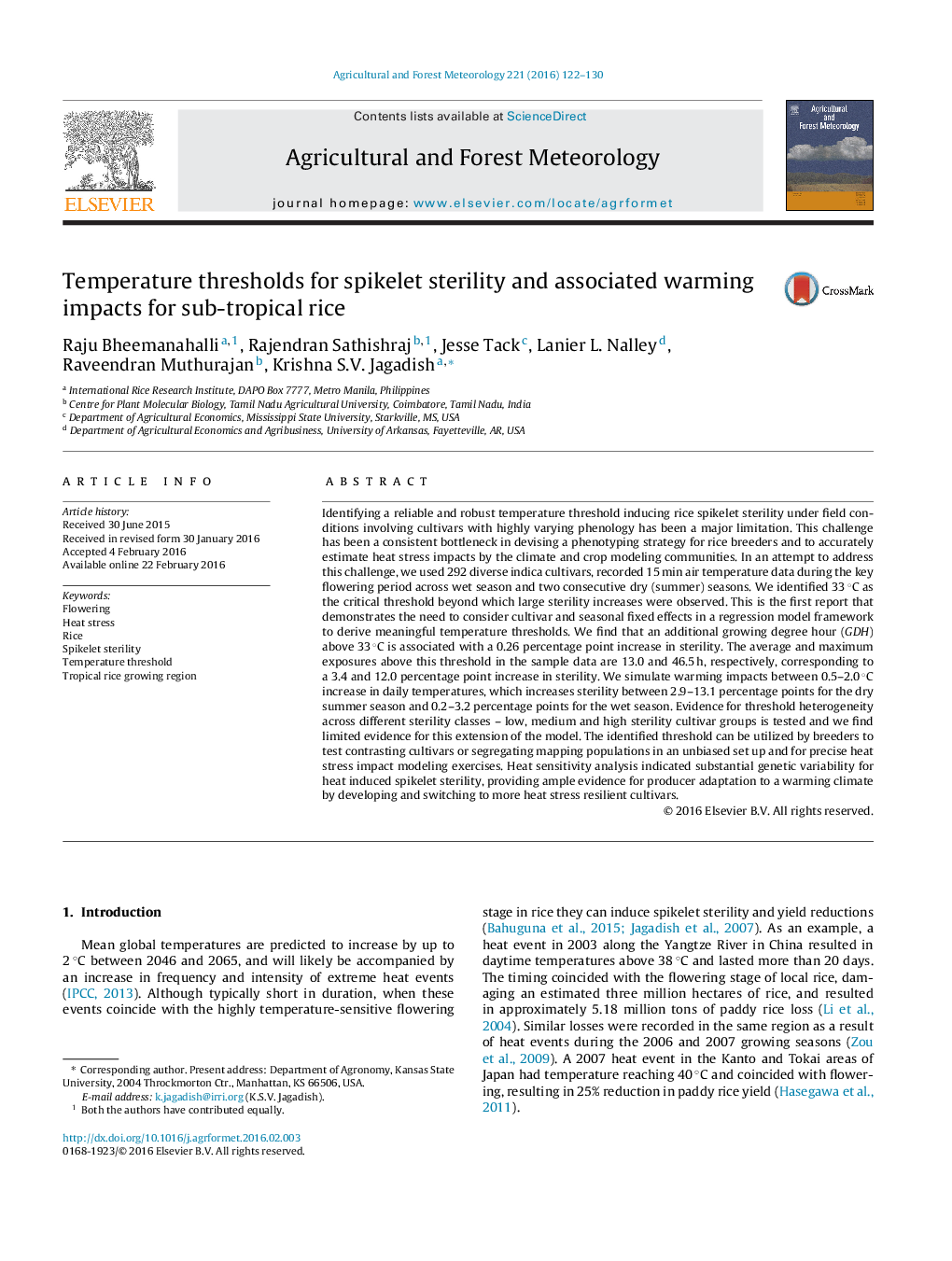| کد مقاله | کد نشریه | سال انتشار | مقاله انگلیسی | نسخه تمام متن |
|---|---|---|---|---|
| 81368 | 158312 | 2016 | 9 صفحه PDF | دانلود رایگان |
• 33 °C is the critical threshold beyond which large sterility increases under field conditions.
• Additional growing degree hour above 33 °C is associated with a 0.26 percentage point increase in sterility.
• Inclusion of appropriate fixed effects is crucial for accurately identifying the appropriate temperature threshold.
Identifying a reliable and robust temperature threshold inducing rice spikelet sterility under field conditions involving cultivars with highly varying phenology has been a major limitation. This challenge has been a consistent bottleneck in devising a phenotyping strategy for rice breeders and to accurately estimate heat stress impacts by the climate and crop modeling communities. In an attempt to address this challenge, we used 292 diverse indica cultivars, recorded 15 min air temperature data during the key flowering period across wet season and two consecutive dry (summer) seasons. We identified 33 °C as the critical threshold beyond which large sterility increases were observed. This is the first report that demonstrates the need to consider cultivar and seasonal fixed effects in a regression model framework to derive meaningful temperature thresholds. We find that an additional growing degree hour (GDH) above 33 °C is associated with a 0.26 percentage point increase in sterility. The average and maximum exposures above this threshold in the sample data are 13.0 and 46.5 h, respectively, corresponding to a 3.4 and 12.0 percentage point increase in sterility. We simulate warming impacts between 0.5–2.0 °C increase in daily temperatures, which increases sterility between 2.9–13.1 percentage points for the dry summer season and 0.2–3.2 percentage points for the wet season. Evidence for threshold heterogeneity across different sterility classes – low, medium and high sterility cultivar groups is tested and we find limited evidence for this extension of the model. The identified threshold can be utilized by breeders to test contrasting cultivars or segregating mapping populations in an unbiased set up and for precise heat stress impact modeling exercises. Heat sensitivity analysis indicated substantial genetic variability for heat induced spikelet sterility, providing ample evidence for producer adaptation to a warming climate by developing and switching to more heat stress resilient cultivars.
Journal: Agricultural and Forest Meteorology - Volume 221, 1 May 2016, Pages 122–130
